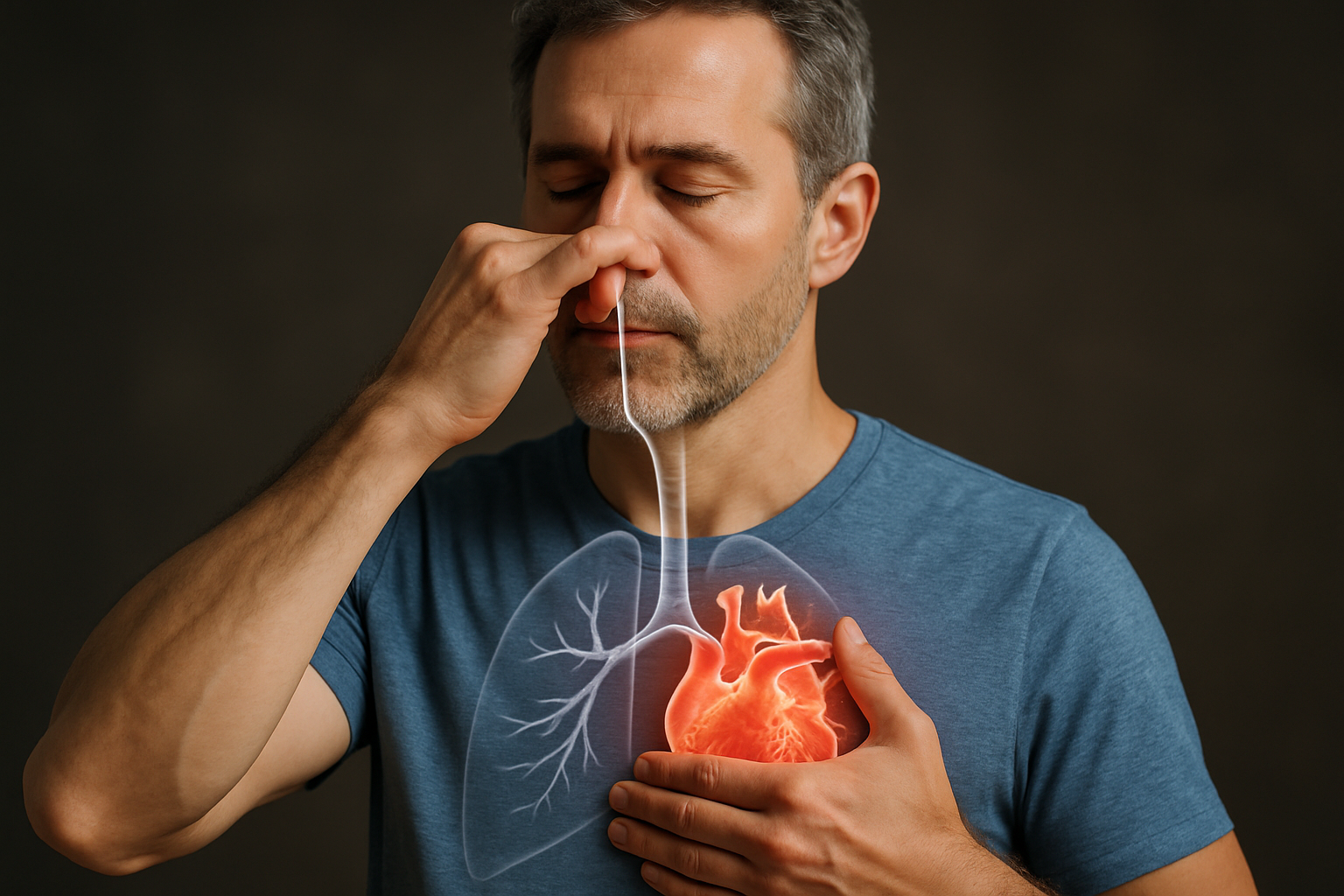Lung Health Warning Signs – Don’t Miss These Red Flags
Breathing issues aren’t always due to aging or poor fitness — sometimes, your lungs are trying to tell you something more serious. Persistent cough, shortness of breath, or chest tightness could signal deeper respiratory problems. Learn which warning signs to watch for and how to take action before it’s too late.

What Are the Early Signs of Lung Disease?
Recognizing the early signs of lung disease can dramatically improve treatment outcomes and quality of life. The most common initial symptoms include a persistent cough lasting more than eight weeks, especially one that produces blood or unusual amounts of mucus. Unexplained shortness of breath during routine activities signals potential lung damage, even if you’ve maintained your normal fitness level.
Weight loss without dietary changes often accompanies lung conditions, as the body works harder to breathe and may struggle with proper nutrition absorption. Recurring respiratory infections, such as bronchitis or pneumonia, indicate compromised lung function and weakened immunity. Chest pain that worsens with deep breathing or coughing shouldn’t be dismissed as muscle strain, particularly when accompanied by other respiratory symptoms.
Fatigue that interferes with daily activities can result from decreased oxygen levels in your blood, forcing your heart to work overtime. Voice changes, including persistent hoarseness, may indicate issues with your respiratory tract or lung-related nerve damage.
How to Spot Lung Damage Before It’s Too Late
Learning how to spot lung damage requires attention to subtle changes in your breathing patterns and overall health. Monitor your exercise tolerance closely – if stairs that never bothered you suddenly leave you winded, this could indicate declining lung function. Pay attention to your sleep quality, as lung problems often worsen at night, causing restless sleep or the need to sleep propped up on multiple pillows.
Observe your fingernails and lips for color changes. Blue or gray discoloration, known as cyanosis, indicates insufficient oxygen in your blood and requires immediate medical attention. Swelling in your feet, ankles, or legs can occur when lung disease affects your heart’s ability to pump effectively.
Changes in your mucus production deserve attention too. Increased volume, unusual colors like green or rust, or blood-tinged sputum all warrant medical evaluation. Digital clubbing, where fingertips become enlarged and rounded, develops gradually with chronic lung conditions and often goes unnoticed until advanced stages.
Breathing Problems Warning Signs You Shouldn’t Ignore
Certain breathing problems warning signs demand immediate medical attention, while others develop gradually and may seem manageable initially. Sudden onset shortness of breath, especially with chest pain, could indicate a pulmonary embolism or pneumothorax requiring emergency treatment.
Wheezing or whistling sounds when breathing suggest airway obstruction or inflammation. While asthma commonly causes wheezing, it can also indicate chronic obstructive pulmonary disease (COPD), lung cancer, or other serious conditions when appearing for the first time in adults.
Stridor, a harsh, high-pitched sound when inhaling, signals upper airway obstruction and constitutes a medical emergency. Difficulty speaking in full sentences due to breathlessness, even during minimal exertion, indicates significant respiratory compromise.
Night sweats combined with respiratory symptoms may point to infections like tuberculosis or certain cancers. Rapid, shallow breathing at rest suggests your lungs aren’t efficiently exchanging oxygen and carbon dioxide, forcing your respiratory rate to increase compensatively.
Essential Lung Health Checklist for Early Detection
Creating a comprehensive lung health checklist helps you monitor changes systematically and provides valuable information for healthcare providers. Track your daily symptoms, noting when shortness of breath occurs, how long coughing episodes last, and what triggers worsen your symptoms.
Monitor your peak flow readings if you have access to a peak flow meter, as declining numbers can detect problems before you feel symptoms. Document your exercise capacity by noting how many stairs you can climb or how far you can walk without becoming short of breath.
Keep a medication log if you use inhalers or other respiratory treatments, recording how often you need rescue medications. Note environmental triggers that affect your breathing, such as cold air, humidity, allergens, or air pollution levels in your area.
Schedule regular check-ups with healthcare providers familiar with respiratory health, especially if you have risk factors like smoking history, occupational exposures, or family history of lung disease. Annual chest X-rays or pulmonary function tests can detect changes before symptoms become severe.
When Professional Treatment Becomes Necessary
Professional lung disease treatment varies significantly based on the specific condition, severity, and individual patient factors. Early intervention typically involves comprehensive diagnostic testing, including chest imaging, blood tests, and pulmonary function studies to determine the exact nature and extent of lung damage.
Treatment approaches range from lifestyle modifications and medication management for conditions like asthma or early COPD, to more intensive interventions for advanced diseases. Pulmonary rehabilitation programs combine exercise training, education, and support to improve quality of life and slow disease progression.
Advanced treatments may include oxygen therapy, bronchoscopic procedures, or surgical interventions depending on the diagnosis. Many patients benefit from coordinated care teams including pulmonologists, respiratory therapists, and other specialists who work together to optimize treatment outcomes.
Your lungs are remarkable organs capable of significant healing when given proper care and attention. Recognizing warning signs early, seeking appropriate medical evaluation, and following through with recommended treatments can preserve your respiratory health for years to come. Don’t wait until breathing becomes a struggle – your lungs are sending important messages that deserve immediate attention and professional medical guidance.
This article is for informational purposes only and should not be considered medical advice. Please consult a qualified healthcare professional for personalized guidance and treatment.




